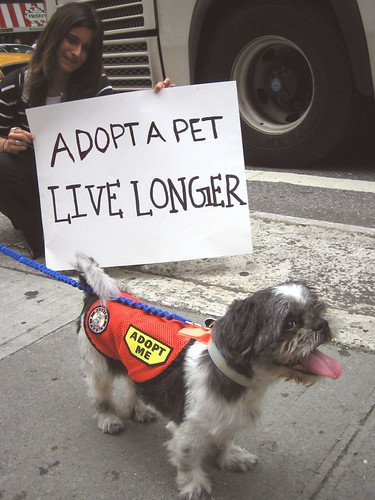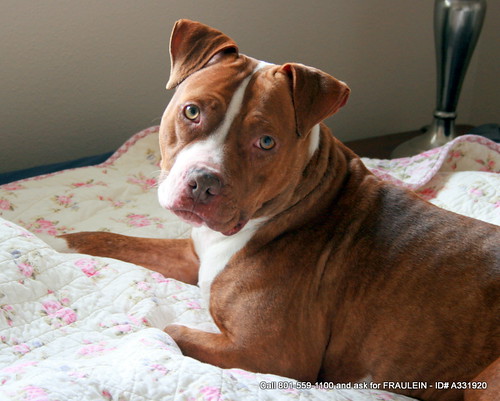 |
| Kwan, P. (2007). Adopt a Pet, Live Longer! [Photograph]. Retrieved from http://www. flickr.com/photos/sayheypatrick/1140020132/ |
For blog of my choice I’ve decided to focus on the Edmonton Humane Society (EHS), a registered charity that works to prevent cruelty to animals as well as find forever homes for animals in their care. The Edmonton Humane Society was first organized in 1907 as a welfare educator and then in 1910 it was established as a nonprofit organization working for the welfare of animals. The EHS has gone to great lengths to integrate themselves into the available online social media sites in order to get their message out to Edmontonians, Albertans and potentially all of Canada.
 |
Salt Lake County Animal Shelter/Services (2010). Pit Bull
Hiking - Faulein ID# A331920 [Photograph]. Retrieved
from http://www.flickr.com/photos/maplegirlie/4411979229/
|
The EHS has expanded to other uses of social media including Facebook and Twitter. Through the sites the EHS has been able to integrate themselves into the everyday lives of Edmontonians. Their Facebook page encourages people to share stories about their pets as well as comment on questions the EHS proposes. The page is also used to feature events occurring around the city and feature certain adoptable animals. Their twitter account @EdmontonHumane offers the most up-to-date information on the society. This site is also used to highlight pictures of animals and stimulate discussions about different topics. Through these sites the EHS has been able to feature certain animals which could potentially diversify the viewers they have to their site. I think it’s a great business strategy for an organization to be involved in Facebook and Twitter since the population uses these sites heavily. By having numerous tweets or posts per day the EHS stays in the forefront of people’s mind. By encouraging people to comment and share their stories the EHS becomes more personal and helps people to connect with their cause. They are also able to better disseminate information about adoptable pets by having feature pets on each site.
The EHS has come a long way from 1907. While they still maintain their nonprofit status and work for the prevention of cruelty to animals they, through their uses of social media, have been able to connect to Edmontonians like never before. This has been a great business strategy that can only continue to help them in the future.
Another student in this class, Becky, has an interesting wiki article about double muscling in cattle and she also speaks about the uses of wikipedia, another online tool.